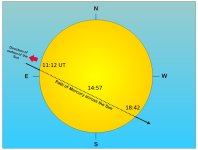Associate
- Joined
- 3 Oct 2014
- Posts
- 1,756
@sityeuropa - when you get eye pieces they can cost anything from peanuts to obscene amounts. I found that the Plossl ones really good (and you can get televue ones quite cheaply). They're good because they have less glass and deliver a lot of light.
I have a few Baader Hyperion and they are better than the William Optics in my view (through the Pentax which is no slouch). When I tried them all with a shoot out with a Televue Nagler then the differences were marked on Saturn on the pentax:
WO - no separation between ring and planet body
Baader - separation between rings and body with some hint at 3D
Nagler - full separation of rings and bod with a lovely 3D appearance.
Thanks for the suggestions. Nagler eyepiece price !, i'd be scared getting the wrong size. I'd love to try them out to see if I can see the difference. Have to try get to an event and get chatting.



